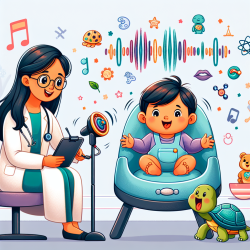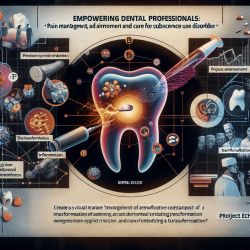As speech therapists and educators, understanding the nuances of infant phonetic development is crucial for early identification and intervention of potential speech and language delays. A fascinating study, "Comparison of Perceptual and Acoustic Analyses of Two Infants' Phonetic Ability," sheds light on the complexity of prelinguistic vocalizations and their implications for speech therapy practices.
The research explores the speech development of two infants from six to eighteen months, focusing on how different methods of phonetic and acoustic analysis can highlight variations in speech development. One of the key takeaways for practitioners is the significance of early and nuanced analysis of infant babbling patterns.
The study utilized four methods of analysis: infraphonological analysis, vowel formant analysis, babbling level analysis, and phonetic contrast estimators. Each method provided unique insights into the infants' phonetic development, highlighting the importance of a multifaceted approach to understanding early speech patterns.
For speech therapists, this research underscores the potential of using advanced phonetic analysis in early assessment. Early identification of atypical babbling patterns or restricted vowel spaces could signal the need for intervention before more overt speech and language delays emerge. By incorporating techniques like infraphonological and vowel formant analyses into assessment practices, therapists can gain a deeper understanding of an infant's phonetic landscape and tailor interventions more effectively.
Moreover, the study encourages further research into the predictive validity of these phonetic measures. Understanding which aspects of early phonetic development correlate with later speech and language outcomes can refine assessment tools and intervention strategies, making them more predictive and targeted.
However, the application of such sophisticated analyses in clinical settings does present challenges, notably the need for specialized equipment and training. Despite these hurdles, the potential benefits for early identification and intervention strategies are compelling. As technology becomes more accessible and speech therapists become more technologically savvy, these barriers are likely to diminish.
In conclusion, this research article offers valuable insights for improving speech therapy practices through a deeper understanding of infant phonetic development. By adopting a more nuanced approach to early speech assessment, therapists can enhance their ability to identify and intervene in potential speech and language delays, ultimately supporting better outcomes for the children they serve.
To delve deeper into the intricacies of infant phonetic development and the methodologies used in this study, I highly recommend reading the original research paper. For more information, please follow this link: Comparison of Perceptual and Acoustic Analyses of Two Infants' Phonetic Ability.










